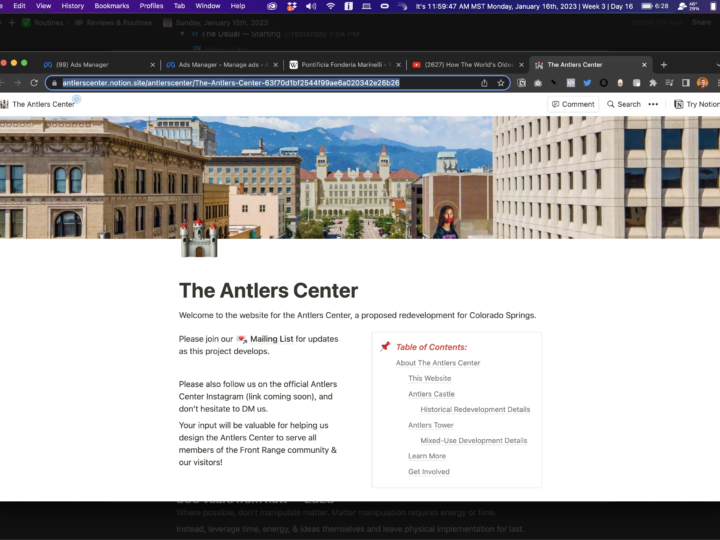
“Three Semesters worth of college education have a barely noticeable impact on students’ skills in critical thinking, complex reasoning, and writing.”
-Academically Adrift
Overview
Academically Adrift is an incredibly difficult book to read. It is written by research-oriented academics who did not take the time to use simple language to explain their findings. I’ve decided to translate those findings for laypeople, because fixing education is up to all of us.
I read the entire book out loud with my friendly neighborhood doctorate-level-academic (known locally as “mom”) over the course of five weeks. We were only able to understand the content of the book by discussing our interpretations of it after nearly every paragraph. I took detailed notes along the way.
Do not attempt reading it on your own. That’s why I wrote this post.
The problem, put simply, is this: Hardly anyone learns what we teach them in school. No one remembers what they are taught after the test date passes. Further, even though we make a vocal priority of teaching critical thinking and other essential life skills, very few people glean those from their college experience.
Schools will go on and on about creative problem solving, but their students simply do not learn how to solve problems creatively.
If you’re interested in details: nearly 50% of higher education recipients showed no improvement in critical thinking. The other 50 percent showed less than a fraction of a letter grade of improvement over the course of two years. On top of that, those who do show marked improvement in these life skills during college do so not as a result of anything in their college experience, but rather as a result of their own self-education. This is the case nation-wide in spite of a boat-load of rhetoric from all institutions of higher learning about equipping students with these life skills.
Outline
There are five chapters. The first highlights the evidence that a problem exists to be researched and details the tool used to research it. The “CLA” (Collegiate Learning Assessment) is a critical thinking and complex reasoning test which the book’s authors used to research non-field-specific cognitive growth over the course of two years. They say it “was designed to assess core outcomes espoused by all of higher education – critical thinking, analytical reasoning, problem solving, and writing.”
The second and third chapters detail their research into the problem of limited learning, both in subject-level skills and in the overall CLA-tested skills just listed.
The fourth and fifth chapters explore the underlying causes of such limited learning. The researchers present popular guesses at these causes, because no one (except students, who they notably did not ask) actually knows why students aren’t learning how to think outside the box.
The researchers use correlation to determine a list of suspected causes of limited learning: “low faculty expectations,” “low course requirements,” “poor measurement tools,” and “no proven benefit of social studying practices.” They later go on to suggest that the solution, then, is: high expectations for students, rigorous class requirements (40 pages of reading per week and at least one 20+ page assignment per course), better tools of measurement, and solitary studying.
Of course, these suggestions aren’t entirely off base, but there’s no data to ensure they’ll work. As a life long student (who loves learning), I think those suggestions sound awful. To suggest that the solution is merely reversing the assumed causes of the problem–based loosely on correlation–might be a bit nonacademic. These solutions are the institutional equivalent of grasping at straws.
A Cultural Conflict Of Interest
The book outlines the (terribly misaligned) interests of each involved party as follows:
- Students want to have a fun and beneficial experience which they enjoy but also pays dividends on their employability and income earning potential.
- Parents want safety, skills acquisition, and transparency (grades and otherwise).
- Schools want retention, tuition, and student body growth.
- Academics (professors, teachers) want time to do research, and often tend to neglect the classroom due to the way career rewards within universities are structured. Often, tenure is awarded primarily based on publication, research, and prestige rather than on teaching prowess.
- Other faculty are required to find ways to spend less to do more.
None of these interests play together to encourage critical thinking, even though a huge percentage of each of those parties (when polled) agree that critical thinking is a necessary skill which schools must teach.
Our culture doesn’t see the effect of this issue until we begin to employ these students. Employers desperately need graduates with better life skills. Because employers are out of the loop of higher education, that feedback is tough to deliver to the proper levels of authority.
Suspected Solutions From A Lifelong Student
Fascinatingly, the top 10% of CLA performers share nothing in common other than outstanding CLA performance. They represent all racial and socioeconomic backgrounds, and all levels of academic preparation!
My hypothesis is that the top 10% share the following circumstance: they found a personal interest or fascination during their freshman year. This interest had them voluntarily apply critical thinking as they learned it on their own. This was my experience, and I suspect I’m not alone.
A Tragically Missed Point
The authors closely skirt my 10% hypothesis with phrases like “geeking out” and “interest driven pursuits” but then fall away from a potential insight by refocusing on traditional forms of assessment and regular academic learning. This book makes an important discovery and then misses the point completely.
The authors mention that students optimize the least amount of work for acceptable outcomes. They then emphasize the importance student-faculty interaction and “requirements” for reading and writing without acknowledging whether students actually meet those requirements. Academics focus on bandaging the problem of deadly boring and monotonous schooling with expensive add-ons instead of making classes fun.
That’s right, the simple solution would be to make learning fun. We have a stodgy, traditional Prussian-based model of education rusted and left over from depression-era times. We refuse to engage students’ curiosity and instead insist on trinkets and cheap tricks to patch the bumbling experience of higher education.
The Point: The academic world needs change if it hopes to foster the outcomes it advertises. This change cannot be solely at the levels of requirements and expectations.
If we want to act on the research presented in this book, we have to rethink education in a way that benefits individual students and teachers, and can be spread upward through the entire system. Else we have no hope of steering such an impossibly large ship. My proposal is that we find ways to make learning fun.
The title for Chapter 4 is “Channeling Students’ Energies Toward Learning,” which manages to indicate that the authors think students’ energies need to be “channeled.” Does this imply that they aren’t able to pursue worthwhile interests on their own? I think it does, and I would even say it implies that learning isn’t fun or interesting on its own. The toxic foundation for the problem itself is in the very chapter title, and yet they overlook it.
Conclusion
TL;DR: Schools say they want to teach critical thinking. Everyone agrees that schools should teach critical thinking. There are simply no intrinsic rewards in the world of higher education for encouraging students to think critically, and those assigned to teach students to think critically can’t think critically enough to see a solution. It’s a uncreative problem solving epidemic.
The research from the book is incredibly insightful, and I can’t thank the authors enough for detailing it, but unfortunately it’s inaccessible for anyone who is not personally driven to improve higher education.
In a startling display of irony, this book presents the problems in our education system in a way that literally embodies those problems. It is deadly boring, difficult to decipher, and unless you’re extraordinarily dedicated to learning from it you won’t get anything out of enduring it. Just like college.
You can get the book here on Amazon. (though, as I mentioned, you should only read it if you are a very patient statistician.)
Continued Learning
If you’re interested in learning more about the current state of higher education, I recently watched Ivory Tower (wiki link). It’s a brilliant documentary, and I highly recommend it to anyone who is interested in getting the overview of modern higher education as of 2014. Here’s the trailer:
You can watch the whole documentary now on Amazon or iTunes.
0 Comments
Leave a reply
You must be logged in to post a comment.




